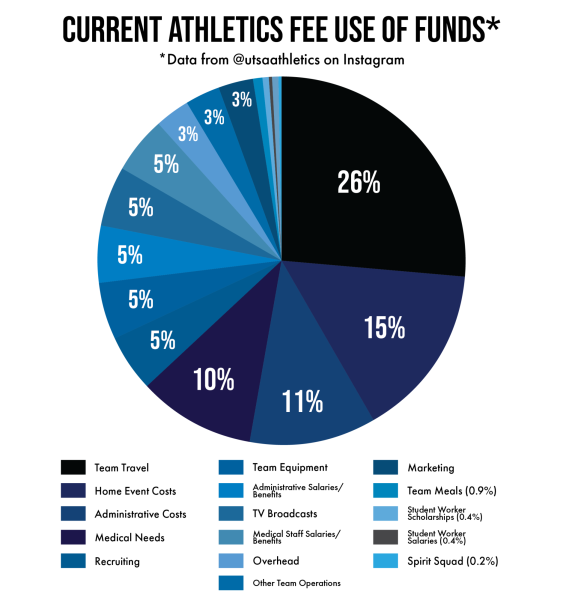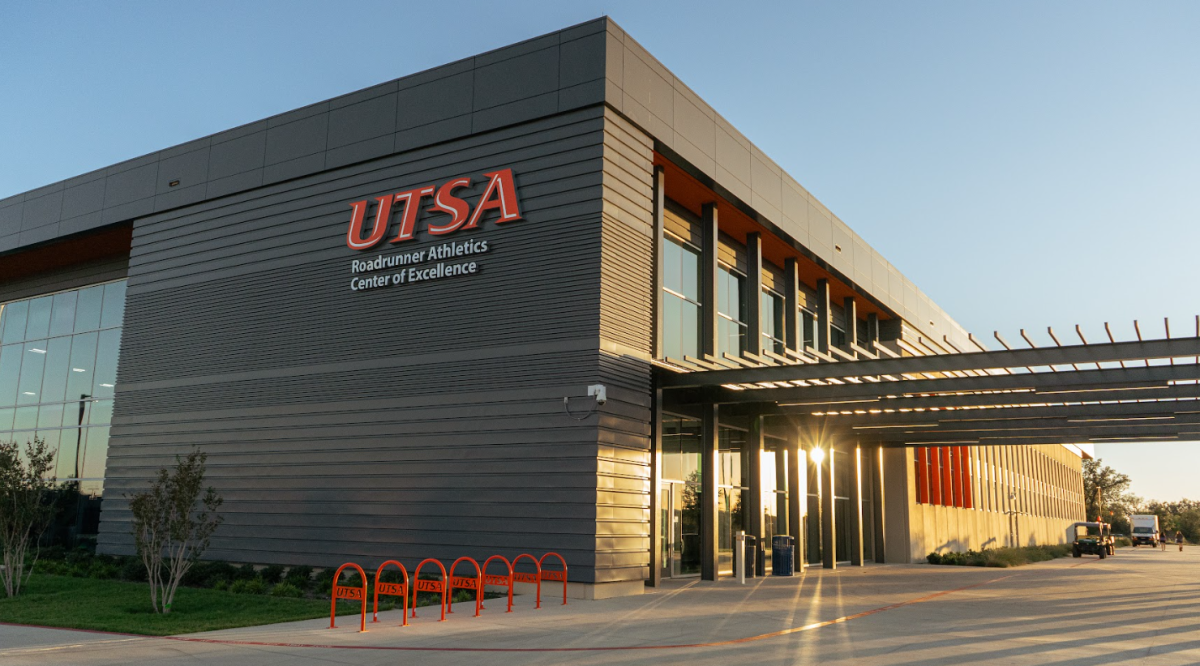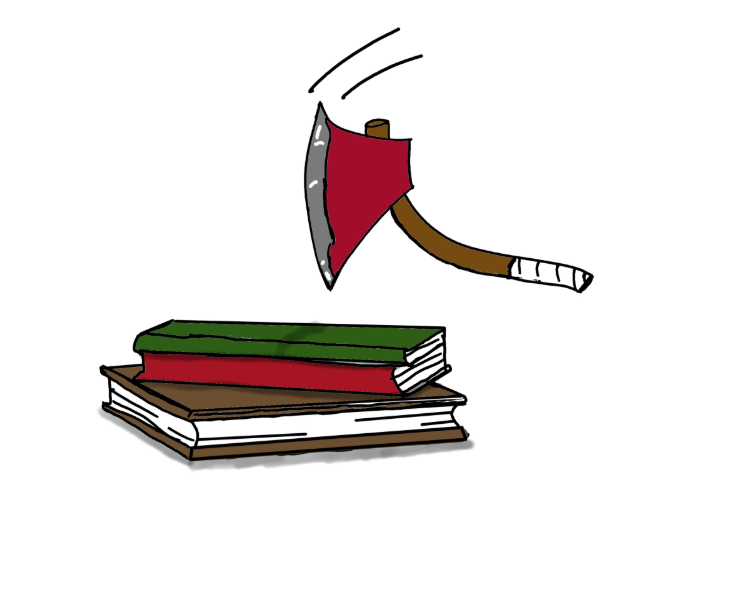Intercollegiate Athletics and Athletics Director Dr. Lisa Campos held an open forum last Thursday on the Downtown Campus so students could ask questions about the new athletics fee proposal. She addressed both questions and concerns about how the increased fee will impact UTSA students.
In 2007, UTSA students passed an athletics fee increase to help fund an athletics department that would include 16 different sports teams that are still partially funded by UTSA students today. Despite numerous increase proposals, the athletics fee that students pay every semester has not changed since 2007.
Since its initial creation in 2011, the athletic department’s rate of return took 10 years before gaining any sort of national notoriety. It was not until 2021 that the football team won a conference title while competing in Conference USA. The objective of this year’s fee proposal is to grow the athletics department to help the university further advance within the conference as well as gain greater national recognition.
“Our responsibility in our charge is to grow our budget and to build our budget through student fees, and that’s one of the reasons we went into the American Athletic Conference [AAC],” Campos said. “It was a university decision; it wasn’t just an athletic decision.”
Motivated by previous advancements brought upon by students, Campos hopes to achieve a similar outcome through the “Everyone Wins” proposal campaign.
The athletics fee for UTSA students is currently capped at 12 credit hours, and that cap will not change if students vote yes to this increase proposal. This increase will affect incoming students more than anyone else, as upperclassmen fees are cut nearly in half to allot for less time spent on campus during their last year.

The current athletics fee is $240 for those taking 12 or more credit hours. The proposed increase will add $1.50 per credit hour, capped at 12 hours for five years. The fee will steadily increase until it hits $27.50 per credit hour, reaching a maximum fee of $330 that all students will pay each semester.
At the forum, Campos disclosed that if the initiative is passed by the students, it will bring in an estimated half a million dollars to the athletics department within the first year of a higher fee implementation.
In the AAC, university rivals are based in nine different states, which means that much of the athletics funding will continue to be used for travel purposes for the sports teams.
With the current $35 million athletics budget, travel takes up 26% of the budget, but this percentage will increase if the budget increases. “Our travel party’s over 200 for football. A large amount would go towards travel,” Campos said.
There are also plans to build a basketball and volleyball practice facility. “If anyone’s been in the Convocation Center, it is jam-packed,” Campos said of the current sports center on the main campus. “There’s just not enough time to get all the practices; the band likes to use it; cheer; there’s just so many things going on at the Convocation Center, so we need to invest in that.”
According to Campos, many facilities could benefit from an upgrade. The Roadrunner softball field was grandfathered in when it came to meeting NCAA regulations, but the field technically does not meet standards as center field is 20 feet shy of the 220-foot minimum.
Although the main focus is geared towards funding the athletics department, the title “Everybody Wins” suggests that this fee increase could serve as a boost for all current and future students as well.
“A no vote means you will get nothing; as opposed to a yes vote, you’ll get something,” Campos said.
Campos said that the school currently works with a “zero-based funding model every budget year.” This means that funds obtained for the athletics department could be reallocated to different departments at the university aside from the athletics department. However, this does not necessarily mean that it will be; this just suggests that students may be able to benefit from funds as much as student-athletes do.
According to the Everyone Wins website, only 6% of UTSA’s current budget is allocated to the athletics department. Through the website, a pie chart highlights how current funding is used. Campos says that travel funding will continue to remain a highly funded aspect, but that she hopes to use an increase in funding for programs such as athletics work study, ROTC, SOSA, Rowdy Crew and cheer. The website claims that UTSA has the third lowest operating budget in the AAC but neglects to state just how much or how little the operating budgets for Navy and Wichita State are.
Student voting begins on October 25th at 8 a.m. and will close at 11:59 p.m. on October 26th. Students can vote through rowdylink.utsa.edu.











Jessica Slaughter • Oct 18, 2023 at 11:50 am
Transparency is key! There is always “more” than just inflation… Great article!
Jason Harvey • Oct 17, 2023 at 3:33 pm
Great Post! I think providing clarification on a fee increase within the athletics department is a proactive step towards maintaining trust, addressing concerns, and ensuring that the financial decision aligns with the overall goals and values of the institution and the well-being of its students and community.